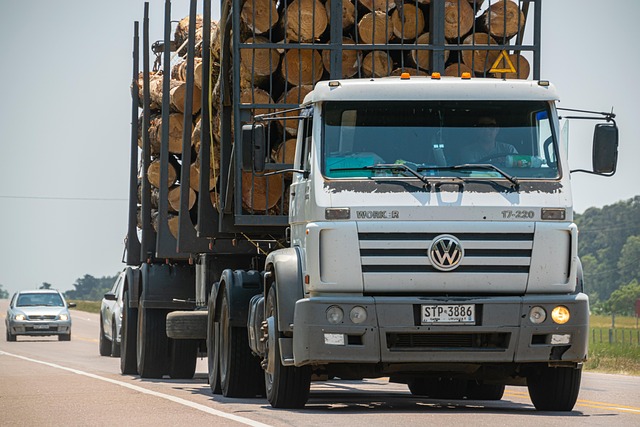Register Car California: Step-by-Step VIN Verification Guide
Looking to register your car in California? This guide simplifies the process, ensuring you meet all state requirements. First, understand the basic needs for registration, including ownership proof a…….

Looking to register your car in California? This guide simplifies the process, ensuring you meet all state requirements. First, understand the basic needs for registration, including ownership proof and vehicle identification number (VIN) verification. Gather essential documents for a seamless VIN check, such as purchase records or lease agreements. Once ready, submit an application with the California DMV along with required fees. After approval, claim your new registration plate, legalizing your vehicle for California roads.
- Understand California Car Registration Requirements
- Gather Necessary Documents for VIN Verification
- Perform Vehicle Identification Number (VIN) Check
- Submit Application and Fees to DMV
- Receive Your California Registration Plate
Understand California Car Registration Requirements

Before registering your car in California, it’s crucial to understand the state’s specific requirements. One key aspect is ensuring the Vehicle Identification Number (VIN) is verified accurately. This process involves a comprehensive inspection to confirm the vehicle’s make, model, year, and other essential details. In California, you’ll typically need to present a valid title, proof of insurance, and completed registration forms at the Department of Motor Vehicles (DMV).
Additionally, many Californians opt for a convenient solution like using a mobile vin verifier or undergoing a vin inspection. These services provide on-site or remote verification, making it easier to meet the state’s standards. A mobile vin inspector can accurately check and transmit your car’s information, ensuring a smooth registration process without the hassle of traditional methods.
Gather Necessary Documents for VIN Verification

Before you can register your car in California, you’ll need to ensure that all the necessary documents are ready for a successful vin verification. This process involves verifying the vehicle’s identification number (VIN) and ensuring its authenticity. Gather essential papers such as the title or registration certificate from the previous owner, proof of insurance, and your valid driver’s license. Additionally, have the vehicle’s purchase agreement or sales receipt handy, as these documents can streamline the vin inspection process.
For a smoother experience, consider obtaining a mobile vin verification service. These services send professionals to your location to conduct the vin inspection, saving you time and effort. Ensure that the service provider is reputable and authorized by the California Department of Motor Vehicles (DMV) to perform these verifications.
Perform Vehicle Identification Number (VIN) Check

Before you can register your car in California, it’s crucial to perform a Vehicle Identification Number (VIN) check. This step is essential for verifying the vehicle’s history and ensuring there are no outstanding issues or fraud. A mobile VIN verifier can facilitate this process by providing a quick and convenient vin inspection service.
You’ll need to ensure that the vehicle isn’t stolen, has up-to-date emissions tests, and meets all safety standards. The state of California will require a comprehensive report from a reliable mobile vin verification service, which will include detailed information about the car’s past, including accident history, odometer readings, and any reported damage. This data is critical for a successful registration.
Submit Application and Fees to DMV

Once you’ve gathered all necessary documents, it’s time to submit your application and fees to the California Department of Motor Vehicles (DMV). This step is crucial for finalizing your vehicle’s registration process. You’ll need to fill out Form DV304, which is the Application for Title and Registration, available on the DMV website. Make sure to include all required information, such as your personal details, vehicle specifications, and proof of insurance.
Along with your application, you must submit the necessary fees. These can be paid online or at a local DMV field office. For vehicles with an antilock braking system (ABS), a vin verification or vin inspection is mandatory, ensuring that the vehicle meets safety standards. Consider opting for a mobile vin service if you prefer a more convenient approach, as these services offer on-site verification, including mobile vin verification and inspection options.
Receive Your California Registration Plate

After completing your California car purchase, it’s time to receive your new registration plate. This crucial step involves a process known as VIN verification, where the unique Vehicle Identification Number (VIN) of your car is cross-checked against state records to ensure everything is in order. You can facilitate this process with a mobile vin verifier or conduct a mobile vin inspection yourself using the vehicle’s digital documentation and your smartphone.
Once your VIN has been verified, you’ll be ready to secure your license plate. This typically involves visiting a local California Department of Motor Vehicles (DMV) office or, in some cases, completing the transaction online, depending on your preference and current residency status. Ensure you have all necessary documentation, including proof of purchase and identification, ready for a seamless registration process.
Registering a car in California involves understanding key requirements, gathering essential documents, and successfully completing the VIN verification process. By ensuring your vehicle complies with state standards and providing all necessary information, you can efficiently navigate the registration procedure, ultimately securing your California registration plate and legalizing your vehicle’s operation within the state. Remember, a thorough understanding of each step, including vin verification, is crucial for a smooth process.







